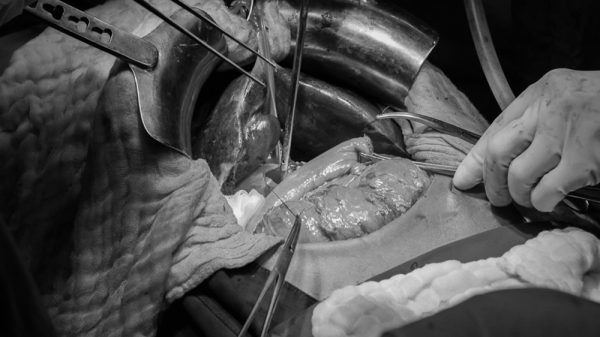The liver transplant procedure is a surgery that removes a damaged liver and puts a healthy one from a donor in its place. A liver transplant is done only when there is liver failure. The donor may either be living or deceased. Being the largest organ inside your body, your liver is a multitasking organ. It performs several vital functions in your body, including the removal of toxins and bacteria from your regulation of immune responses, as well as food, drug, and hormone metabolism. Your liver also produces bile, which aids your body in absorbing fats, fat-soluble vitamins, and cholesterols. The liver also makes proteins that facilitate blood clotting. It is such a vital organ that you cannot do without.
Doctors don’t recommend liver transplant carelessly. They usually reserve it as the last resort if there are severe complications as a result of end-stage liver disease. More so, there are a lot of people waiting on the list for transplant because donor-livers are scarce. The number of deceased donor-livers available for transplant is far less than the number of people who need a transplant. However, the liver can regenerate and return to its proper size within a short time after a part of it is removed. That creates the possibility of having a living-donor if the waiting list is too long and no deceased donor-liver is available.
Why Do Some People Need A Liver Transplant?
An estimate of 7,200 transplants is done in America every year, including both children and adults. Meanwhile, about 15,000 people register to be included on the waiting list yearly. Why do these people need a liver transplant?
A liver transplant becomes necessary when there is liver failure. In such cases, the condition can no longer be controlled with other available treatment options. Some people who have liver cancer may also be recommended for a liver transplant.
Liver failure is sometimes acute (happens quickly). In most instances, however, it is chronic (occurs gradually over a long period). Acute liver (or hepatic) failure usually occurs as a result of liver injury caused by medication.
Chronic hepatic failure is usually a gradual process that takes several months and, in some cases, years. It may occur as a result of various conditions. Most commonly, chronic hepatic failure is a complication of liver cirrhosis.
Liver cirrhosis is a process wherein scar tissue develops in place of the normal, healthy liver tissue. This, in turn, impairs the functions of the liver and may cause liver failure in the long run. Cirrhosis is almost always the underlying reason for the eventual need for liver transplant surgery.
Meanwhile, cirrhosis itself can be a result of various health conditions. Some conditions that can cause cirrhosis and lead to liver failure are as follows:
- Hepatitis B
- Hepatitis C
- Non-alcoholic fatty liver disease
- Alcoholic liver disease.
- Bile duct diseases
- Biliary cirrhosis,
- Sclerosing cholangitis
- Biliary atresia
- Genetic diseases like Wilson’s disease and hemochromatosis
A liver transplant can also help in treating primary liver cancer. However, cancers from another origin that metastasize to the liver cannot be treated with liver transplant surgery.
Your doctor may refer you to a liver transplant center when he recommends you for liver transplant surgery. However, you are at liberty to choose your preferred transplant center if you have one. Your insurance company may also have a list of preferred centers that you can choose from.
Liver Transplant Procedure
The most frequent type of liver transplant is when you are being transplanted with a deceased-donor liver. The waiting list is long, so you usually have to wait for when it reaches your turn, and there is a deceased donor-liver for you.
As soon as you receive a notification that there is a deceased donor-liver, you would have to immediately report at the hospital. Your healthcare team will then put you on admission while you undergo medical examinations to ensure that you are fit and healthy enough to undergo an operation.
The procedure involves the use of general anesthesia. That means that you would not be conscious during the surgery.
While you are under the influence of the anesthesia, the surgeon would cut across your belly to gain access to your liver. The incision site and size generally depend on your doctor’s preferred method as well as the anatomy of your body.
As soon as the surgeon gains access to your liver, he or she would disconnect its bile ducts and blood supply. After that, he would then remove the diseased liver itself.
Having removed the diseased liver, your surgeon would then place the deceased-donor liver in its place. Reattachment of the bile ducts and blood vessels would follow suit.
The procedure seems quite simple, but it sometimes lasts as long as twelve (12) hours.
At the end of the procedure, your surgeon will close up the incision. After this, your healthcare team would transfer you to the ICU (intensive-care unit), where your recovery would begin.
The first step would be to get the donor-liver from your living donor. After this, the surgeons would follow the same transplant procedure we have discussed earlier.
The portion of the liver transplanted into your body and from the living donor would regenerate rapidly to reach its normal size in a matter of months. The same will happen to the portion that is left in your donor’s body.
How Successful Are Liver Transplants?
The chance of having a successful transplant surgery, as well as long-term survival, depends on what your situation is. But generally speaking, about 70% of those people who go for liver transplant would stay alive for a minimum of five years.
That means that out of every ten people that go for a liver transplant procedure, regardless of the reason, about seven will still be alive after five years, while three would have died. So we can say the procedure generally yields successful results.























